I love growing tomatillos for their fresh flavor (and to make ALL of the salsa verde I can!). Thankfully, they require very little maintenance, which makes them one of the easier plants to grow.
When planning your garden, it’s always smart to think about pests and common fungal diseases that impact the plants you’re going to be growing. This is especially true with nightshades like tomatillos, as they can suffer from a lot of pests and diseases.
Let’s start with those, so we can be make better decisions on where to plant them in the garden.
Pests That Love Tomatillos
It’s not just humans that enjoy eating tomatillos, insects and other pests love them too. Here are some of the more common ones you might find on your tomatillo plant.
Aphids
Aphids are little translucent-looking bugs that are usually green, but they can be other colors as well.
Aphids are so common in a garden that it’s hard to keep them away. If you look closely, they’re all over everything. Peppers, tomatoes, and definitely tomatillos.
Plants that Repel Aphids
- Garlic
- Fennel
- Dill
- Catnip
- Chives
- Leeks
- Marigolds
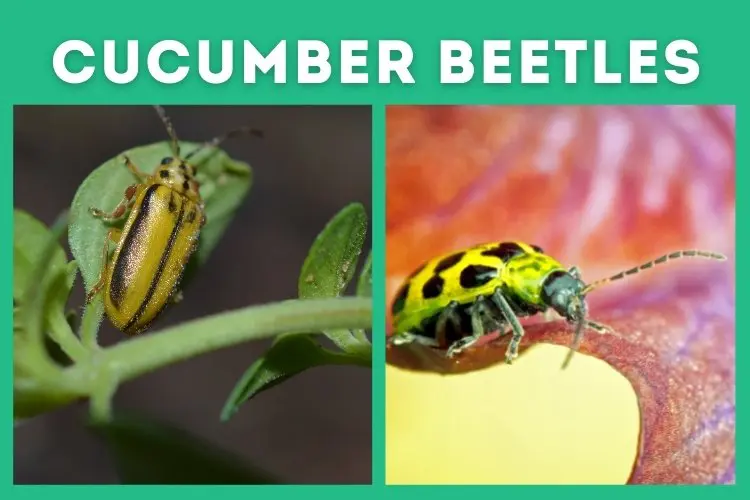
Cucumber Beetles
Cucumber beetles are often yellow and black in color, and they are super annoying.
Even though they are called cucumber beetles, they love to eat tomatillos, watermelons, and muskmelons too, and they’ll do it at an alarming rate.
Plants that Repel Cucumber Beetles
- Radishes
- Nasturtiums
- Tansy
Plants that attract beneficial insects that eat cucumber beetles:
- Marigolds
- Sunflower
- Daisies
- Dill
- Calendula
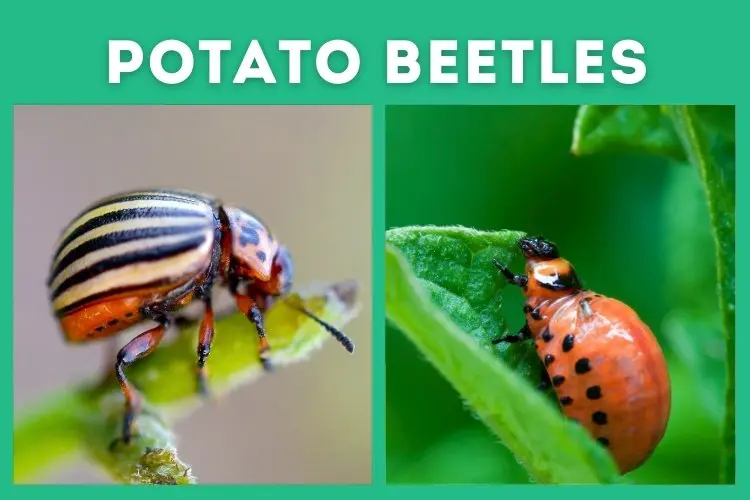
Potato Beetles
Potato beetles love to eat…you guessed it, potatoes! But they also eat nightshades like eggplant, tomato plants, and tomatillos.
Once you see one potato beetle, you’ll soon see more as they spread quickly. There are a few types including three-striped potato beetles and Colorado potato beetles, but they’re all equally as destructive…and even more, fun, if they bite you it can hurt quite a bit!
Plants that Repel Potato Beetles
There aren’t a ton of plants that repel these, so if you’re looking for a good organic insecticide for pest control, try Diatomaceous earth.
- Catnip
- Tansy
- Sage
- Horseradish
- Bush beans
- Marigolds
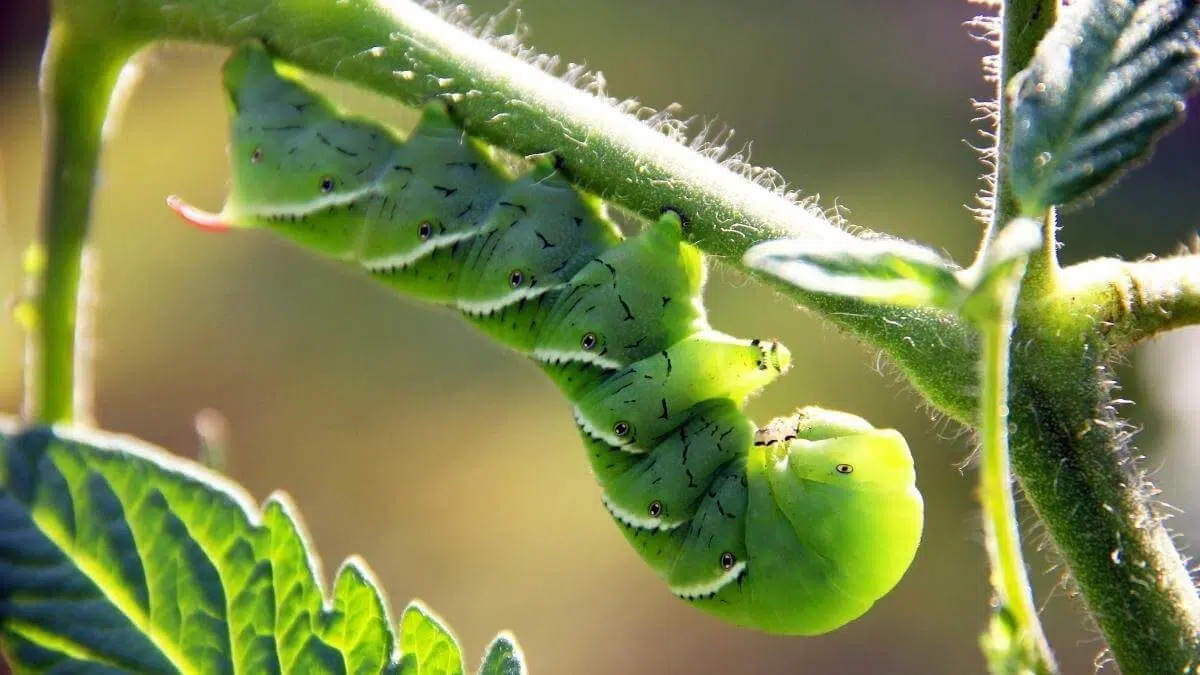
Tomato Hornworms
Often known as the most common tomato worms, tomato hornworms are green in color with a pale stripe that runs down the center of their back. They can grow to be about four inches long and will usually eat leaves, fruit, and flowers before moving on to your tomatillo fruit.
They tend to avoid plants like garlic and onions as they’re toxic for them- but it’s not enough to just plant them next to your tomatillos.
Plants That Repel Tomato Hornworms
- Dill
- Basil
- Marigolds
- Garlic
- Onions
12 Great Tomatillo Companion Plants
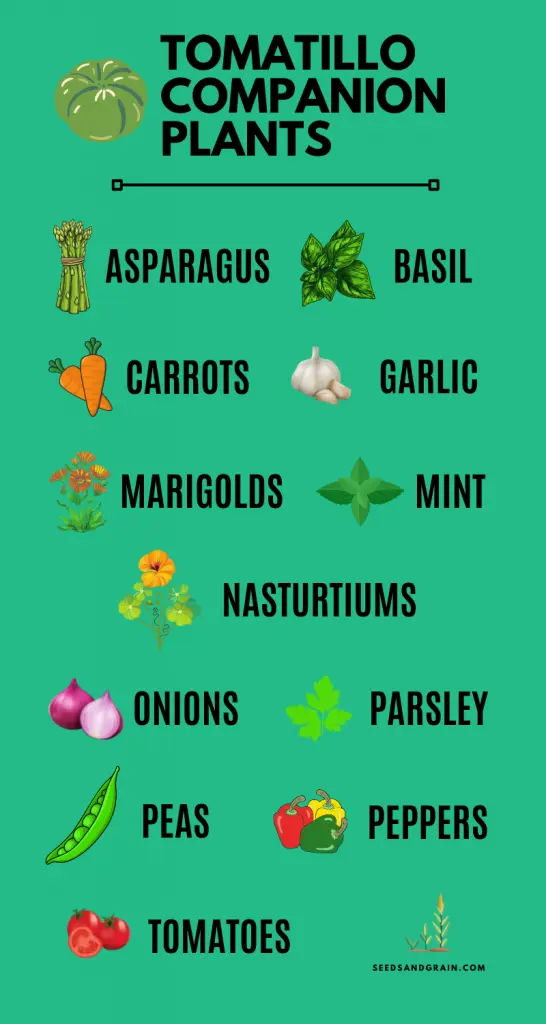
The tomatillo is a nightshade, which means they are heavy feeders and need a lot of nutrients, on top of having some plants they should be avoided planting near.
Here are the top tomatillo companions for your garden:
Asparagus
Asparagus is a great companion plant for tomatillos. They help deter root-knot nematodes, a type of roundworm that can lay eggs inside the roots of your plants (gross!).
Basil
Basil can help repel hornworms and other pests with its strong scent. It’s not because they don’t like the scent, but it seems that it masks the scent of your tomatillos instead.
Basil is a great companion for a lot of plants because of this. You will need quite a bit of it to repel them though.
Carrots
Carrots can help keep the soil aerated by breaking it up, which is especially good if you have clay soil like I do.
Garlic
Garlic is a great deterrent for aphids. Although they need to be planted pretty close. I have a row of garlic one row away from my tomatoes and tomatillos and found some on there the other day.
Marigolds
Marigolds are one of my favorite companion plants because I have yet to find a plant that they don’t help. They attract pollinators and help keep nematodes away.
Mint
Growing mint nearby your tomatillos will absolutely help with aphids, as well as cabbage moths and even ants.
Nasturtiums
Nasturtiums help keep whiteflies and cucumber beetles away. Plus, they’ll attract pollinators to your plants to keep fruit production chugging along.
Onions
The smell of onions can help keep the beetles away, or at least confuse them which can be a huge help. Plus, since onions are small and don’t take up much space, you can definitely plant them close by, or even in between your tomatillo plants.
Onions also help keep spider mites away – another common pest for tomatillos.
Parsley
Parsley attracts hoverflies and their larva will eat aphids. So having parsley around is a great companion for almost anything in the garden.
Parsley also attracts swallowtail butterflies and wasps that will eat insects on surrounding plants as well.
Peas
Peas add nitrogen to the soil, which is great for heavy feeders of nitrogen like tomatoes and tomatillos. Bees also love the taste of pea nectar so you will be attracting pollinators to your nightshades as well.
Peppers
Peppers help prevent root rot for your tomatillos, which is hugely beneficial.
Tomatoes
While tomatoes won’t keep any pests away, they require the same types of soil and nutrients so it makes sense to plant them with tomatillos.
Tomatillos and tomatoes can’t cross-pollinate, so there isn’t too much to worry about. Plus, since they all have flowers, they’ll be attracting pollinators to each other.
What NOT to Plant With Tomatillos
While tomatillos can be planted next to a lot of things, there are some plants you shouldn’t be planting tomatillos near.
Corn
Corn attracts pests like aphids which would be a good reason to keep them away from your tomatillos. But to make it even worse, cucumber beetles love laying their eggs near corn.
If you’ve planted your tomatillos nearby, these pest babies are going to have a huge, delicious meal that will allow them to grow big and lay their own babies. That is one circle of life I can’t get behind, NO thank you.
Kohlrabi & Brassicas
Keep your kohlrabi away from tomatillos and tomatoes, as each will stunt the growth of the other. Brassicas share similar fungal diseases as these two, so it’s wise to keep them away from each other.
Dill
Dill and fennel will help keep pests away, but the oils they release into the soil can do more harm than good.
Fennel
See above on why dill and fennel might not be great companions for tomatillos.
Potatoes
Potatoes are root crops that attract potato beetles and aphids, and since those two love tomatillos, it’s best to keep them separate.
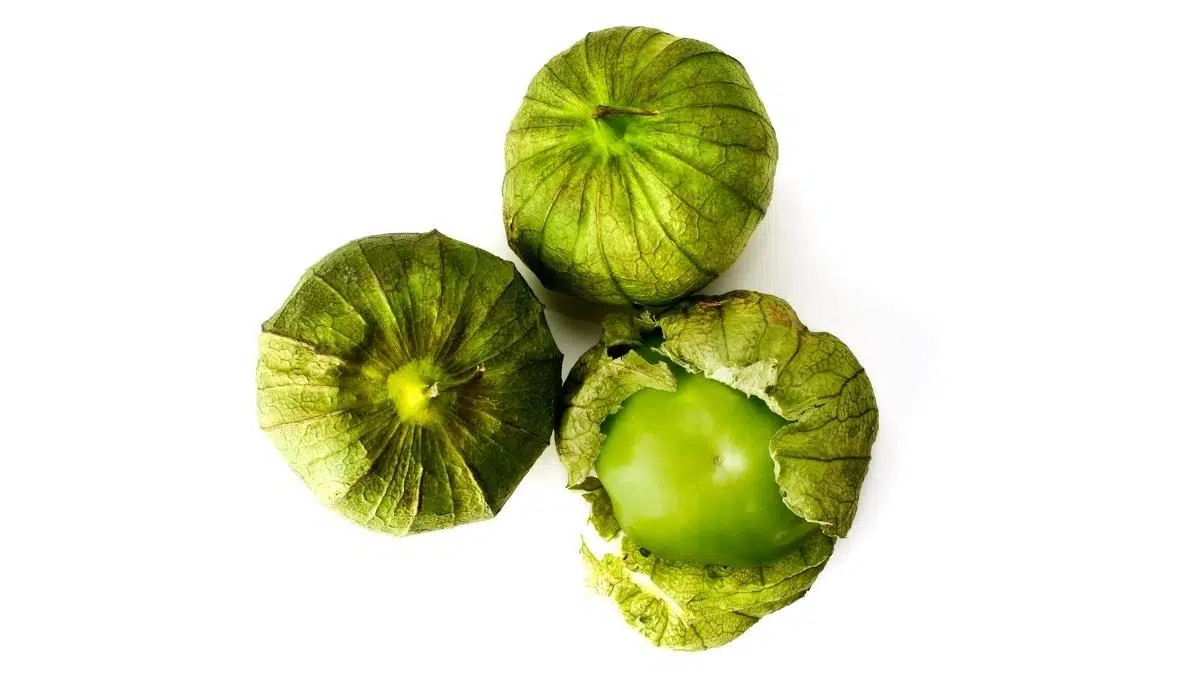
What is Companion Planting?
Companion planting is the idea that you should plant certain things next to one another, and keep certain plants away from others.
What Are the Benefits of Companion Planting?
There are a number of benefits to companion planting, but here are just a few.
Organic Pest Control
Companion planting is a good way to control garden pests in an organic way. By planting an herb that repels asparagus beetles, a common hindrance to asparagus plants, you’re able to better control that beetle population and have a more bountiful asparagus harvest.
Attracting Beneficial Insects
Basil helps attract beneficial insects and pollinators, such as bees and butterflies to your garden. These can help companion plants grow larger and stronger.
Impacting Flavors
This can be both a pro and a con for companion planting. While basil can help tomatoes, peppers, and potatoes taste better, it can make cucumbers taste pretty…basil-y.
So you’ll want to keep this in mind when deciding what to plant nearby and what grows well together in your vegetable and herb garden.
Paying attention to companion plants can help you out quite a bit in terms of reducing the amount of pest damage you get, and the quality of fruit you’ll get when you pick your tomatillos.
When growing tomatillos, keep in mind that you will want to plant at least two flowering plants for the blooms to be pollinated well enough to produce fruit.
So, one of the companions you’ll need for your tomatillos is another tomatillo! 🙂



